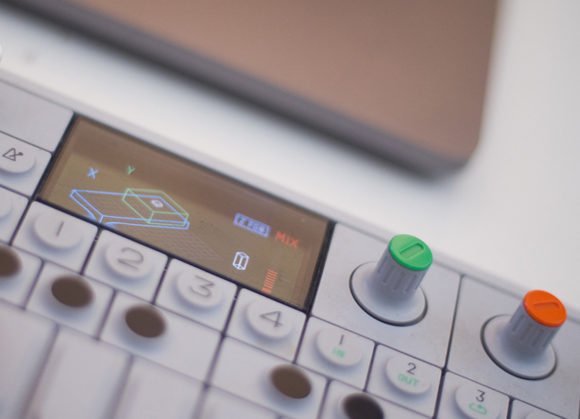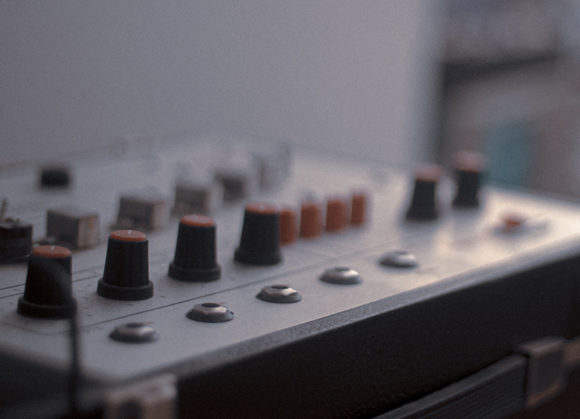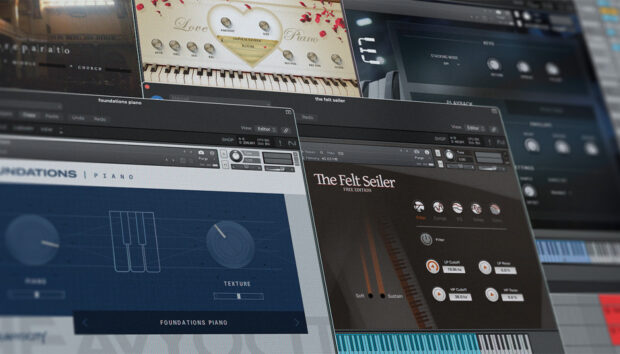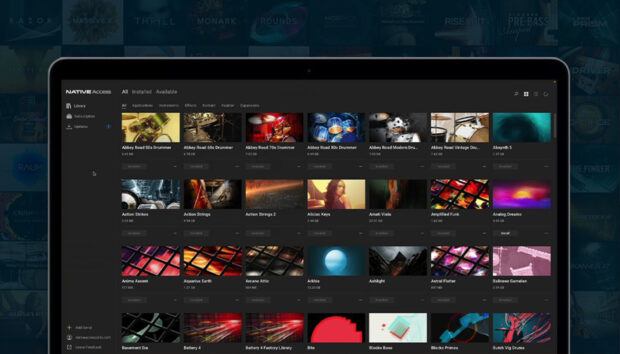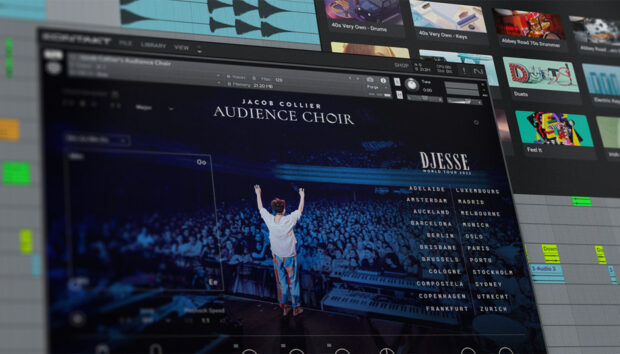If you’ve been paying attention lately, you might have noticed a growing amount of buzz surrounding a boutique sample developer named Slate + Ash – not that any of the three-strong team are all too comfortable with that label.
“Part of the reason we started making samples ourselves in the first place was that we kept hearing all the same sounds,” says cofounder Simon Ashdown from his home in Bristol. “That’s why we were unsure of being a sample developer – we were wary of creating these libraries of sounds where everyone is using the same few standout patches and you’re hearing them everywhere. That’s definitely always in our thoughts when we’re making something commercial.”
To begin with, he and S+A’s other cofounder, Will Slater, needn’t have worried. The pair’s first forays into making their own KONTAKT libraries were solely for use in their work as composers and sound designers for film and television. And when they did begin to create instruments for others, it was on a highly limited basis – their first client was none other than the late Jóhann Jóhannsson, as Will recalls.
“He got in touch and asked if we’d do some bespoke sound design for the film he was working on. At the time, it wasn’t called Arrival, it was a secret name and we didn’t know what it was going to be. But he sent us some stems and just said, “Surprise me,” didn’t he?”
“He was really open with it,” acknowledges Simon. “We did some stuff, and I don’t know what went where. You can hear bits, but it’s not like you can say ‘Oh, that’s that track, and we made that sound on it.’”
It makes things a pain sometimes, but we’re always asking ourselves, ‘What’s a different way to do it?’
Following Arrival, the commissions kept coming in. Between them, Will and Simon have contributed sounds to Ben Salisbury and Geoff Barrow’s scores for Hanna and Annihilation (the latter featuring a “dodgy rogue version” of Constance Demby’s gigantic Space Bass), Daniel Pemberton’s work on Into The Spiderverse, and Gareth Coker’s delicate soundtrack for acclaimed platform game Ori and the Will of the Wisps, among others.
So what prompted a pair of busy composers and sound designers to dive headfirst into the world of commercial sample libraries? That would be a chance meeting with James Worster, who was interning with a company in the same building as Slate + Ash. From a kitchen-based conversation about Simon’s newly acquired Roli Seaboard, James eventually became S+A’s third member, bringing coding experience to the table and taking broad responsibility for designing and building the outfit’s boundary-pushing instruments – beginning with the MPE-friendly AURAS.
Formless sound sculptures
For those who may not have come across it before, MPE, or MIDI Polyphonic Expression, is a standard used by a new wave of controllers, including the aforementioned Seaboard, the Haken Continuum and Roger Linn’s LinnStrument. It builds upon basic MIDI implementation to enable musical gestures on a per-note basis (hence ‘polyphonic’). That means, for example, you might slide or bend between notes by dragging your finger horizontally on a playing surface, or trigger modulation for individual notes by varying the pressure applied with each finger. Typically MPE makes most sense in the context of synthesizers, which generate sound via a wide range of continuously-variable parameters, as opposed to sampled instruments, which trigger discrete snippets of pre-recorded sound. But Slate + Ash doesn’t make typical sampled instruments.
“MPE plays to the way we use samples,” James explains. “With a traditional sampled instrument, you’re just playing them back, but we’re always building in effects, distortion – stuff that’s moving. So in a way it’s like a synth – you’ve got all these parameters you can map to the different dimensions of expression.”
The first – and still the only – MPE-compatible KONTAKT library on the market, AURAS is a bespoke engine for creating and manipulating shapeshifting textures that recall the ambient-adjacent output of artists like Tim Hecker, Ian William Craig, William Basinski, Ben Frost, and others. While each of these inspirations provided a valuable reference point in the creation of AURAS, the library is equally a statement of Slate + Ash’s own sonic aesthetic and general philosophy on instrument design: Create shifting layers of characterful source recordings; stretch, pitch, and effect them into something new; then wrangle the resulting material into highly expressive, playable KONTAKT instruments with some ingenious scripting.
In the case of AURAS, these source recordings range from guitars played with screwdrivers and two people bowing the same Guzheng to artefact-laden, Melodyne-processed recordings of analog synthesizers. You can hear the latter in action on the ‘Overtones’ preset, where opening up the filter reveals a previously unheard layer of digital detritus. Most developers wouldn’t look to emphasise these rough edges, but again, this isn’t your typical KONTAKT library – a fact that may be evident on first seeing the interface.
“Many of the approaches we took were because we wanted to avoid the standard way of doing things,” explains Simon. “‘Oh, we won’t do that, because that’s what everyone else does.’ It makes things a pain sometimes, but we’re always asking ourselves, ‘What’s a different way to do it?’ It almost comes back to this thing of not wanting to be ‘sample developers’. How do we not be that?”
But from AURAS’ minimalist mod matrix to CYCLES’ new ‘spin’ on the traditional ADSR faders, there’s a purpose inherent in Slate + Ash’s interface design – it’s about nudging the user in the direction of the greatest sonic interest: “If you do the normal thing, then people interact with it the way they normally do. We’re trying to lead people to interact with the sound in a way that they might not have thought of before.”

“We take a lot of influence from the art and design world,” adds James. “Partly it’s that idea of trying to make things intuitive for people. Where traditionally, you might have a knob with a number by it, we’d have a circle that’s getting bigger and smaller. The link between the visual style and what it represents audibly, I think, creates a more intuitive experience.”
If all this talk of carefully sculpted sounds and intuitive interfaces makes AURAS seem like a preset machine, it’s worth noting that a great deal of the sonic mangling going on in each patch is done within KONTAKT itself – and you have access to a lot of it via the mod matrix. For those looking to dig even deeper, S+A even provides a separate instrument alongside AURAS. COLOURS gives you direct access to all of AURAS’ source material, and pairs it with an expanded matrix of effects, tone-shapers, and sequencing tools.
“You have quite a limited interface for the main AURAS patches, because there’s so much programming unique to each patch that it’s not possible to offer any more control in a single engine.” says Simon of the decision to create two separate instruments. “So the idea was that most of the individual layers that make up an ‘Aura’ sound really cool on their own. A number of the main patches are closer to soundscapes and have a lot going on. If you’re using AURAS for underscoring or something like that, the single layers can actually be more usable on their own; you don’t always want this dense field of sound. It was about wanting to give people the flexibility to work directly with that material and mould it themselves in a dedicated GUI.”
Endless abstract loops
For Slate + Ash’s second commercial outing, granular/looping sampler-within-a-sampler CYCLES, the team placed flexibility and customization at the very core of the instrument.
“The idea was just to do something really small, wasn’t it?” Will asks Simon.
“Yes. We’d created this AURAS thing, which was reasonably expensive. So we wanted to put something out that was cheaper and more accessible. It wasn’t meant to be a big instrument, it was basically going to be about quickly flicking through loops – you’d change the start and end point, get some interesting tape loops happening, and get a taste of what we are about sonically”.
And then, as is apparently typical of Slate + Ash projects, it snowballed into a “behemoth looping instrument.” Like AURAS and COLOURS, CYCLES is split into two distinct parts, albeit within the same KONTAKT instrument this time. S+A describes LOOPS as an “audio looper, splicer, and synthesizer.” It allows you to create tempo-synced rhythmic patterns from a wide pool of source samples or to drag and drop your own in as a starting point. GRAINS is CYCLES’ granular engine. Rather than generating rhythmic sequences, it splits the sample into tiny particles, providing all the tools needed to morph between fragmented versions of the original and wholly new amorphous textures. Load up a sample or preset and you’re free to flick back and forth between performing evolving loops and atomizing them into clouds of sound.
If AURAS inhabits a distinct sound world, the drag-and-drop nature of sampling in CYCLES means its sonic identity tends instead towards whatever you make of it. Load in a few bars of drums and you’ll get very different results than you might with a string phrase, of course, but the flexibility of the two engines is such that you’re free to wring rhythmic loops or nebulous textures from either, as Simon explains.
That’s the idea, really: to create the ultimate looping machine, in a load of different ways.
“Whether you’re just chopping up the order of the sounds and samples, or pulling it apart into this rhythmic, granular thing that goes in and out of sounding like the original sound, through to really abstract and textural cloud-granular stuff – you can alway spin the X/Y controls into some rhythmic pattern.
“From both directions, you can turn it into something that has some sort of pattern or motion, rather than just pure abstraction, or pure loops. That’s the idea, really: to create the ultimate looping machine, in a load of different ways.”
Despite CYCLES’s added potential for complex sound design, it proves similarly easy to get fast, musical results from it as from AURAS. The secret here isn’t so much the carefully selected source material – though that is a factor – but rather the amount of tuning the team have done within KONTAKT, making sure every knob, fader, and abstract graphical representation operates within a precise range of useful values.
“We use a lot of Eurorack modular, esoteric processing effects and pedals,” says Simon. “We’re trying to build an instrument that achieves the effects of these combinations of tools, but in a way that’s much more intuitive to use. You can pick a loop, or drop in your own, tweak a few knobs and suddenly find something super interesting and inspiring. We tuned the interaction of the elements so that it’s got loads of sweet spots – we were trying to build something that just had sweet spots everywhere; you turn most knobs and something cool will happen.”
Simple tips for creative sampling
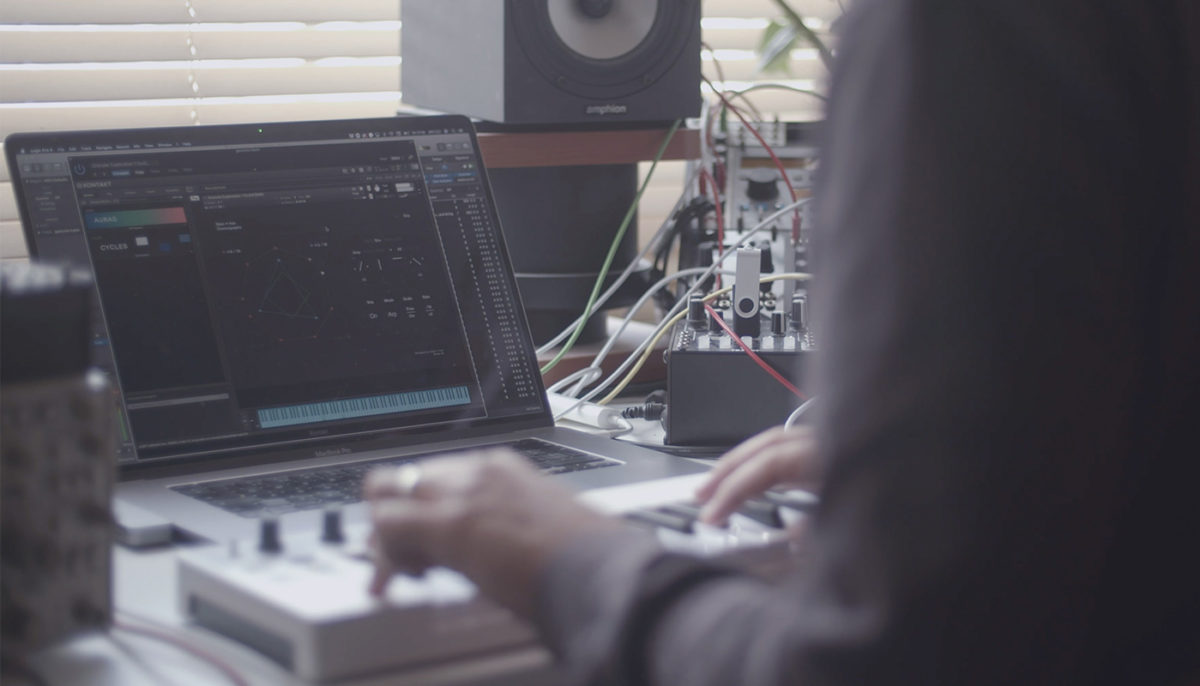
Given some time with the sonic alchemists at Slate + Ash, it would be a missed opportunity not to ask what kind of advice they might have for others looking to begin building their own sampled instruments. But despite their unconventional approach to the art and the equally out-there sonic signature, the biggest tip the team had to offer aligns pretty closely to what a more conventional sample developer might tell you: Get it right at the source.
“I think one of the main things, even though we do all these fancy GUIs, is good source material,” says Simon. “If you’ve got good source material, you don’t necessarily need to do too much work a lot of the time. You just take an interesting recording, something with some character, and pitch it down, and it’s great. That’s what a lot of Will and I were doing originally.
“We used to have this thing of really trying not to do too much in the engine – of trying to put the sound design in the recording. And I don’t mean that we’d put loads of effects on the recording, but if you’re bowing something, for example, try to really pay attention to what is happening with the sound while you’re recording. Is there some weird little kink, or bow noise? If you hear something like that, try to emphasise it, because that can make your sample really interesting. We often say we’re fishing for happy accidents.”
“Sometimes there would be literally the two of us over something with a string on it and we’d both have bows,” continues Will. “I’d play the first bit, and then Simon would play the second bit, and we’d both be responsible for different parts of the sound – but it’d be coming together in the same space. We tried to capture it all in one recording as opposed to layering it up, so it felt like it was a real thing before we put it in Kontakt. It was almost like some sort of performance art piece at times, but with no audience.”
And the secret to creating the source material behind S+A’s trademark organic, evolving textures? According to Simon, it’s about adding movement to the recording – but not too much.
“As much as we’re always trying to put movement in the GUI, we’re always doing that in the sample source as well. It always makes things feel more alive if there’s a bit of variation and movement, but you have to try to keep it in balance. If you have crazy amounts of movement, then it can work against you and result in it feeling even more sampled, because you keep hearing the same movement repeating. But if you can get that balance of subtle movement and variation into the recording, it’ll play back in a much more natural way.”
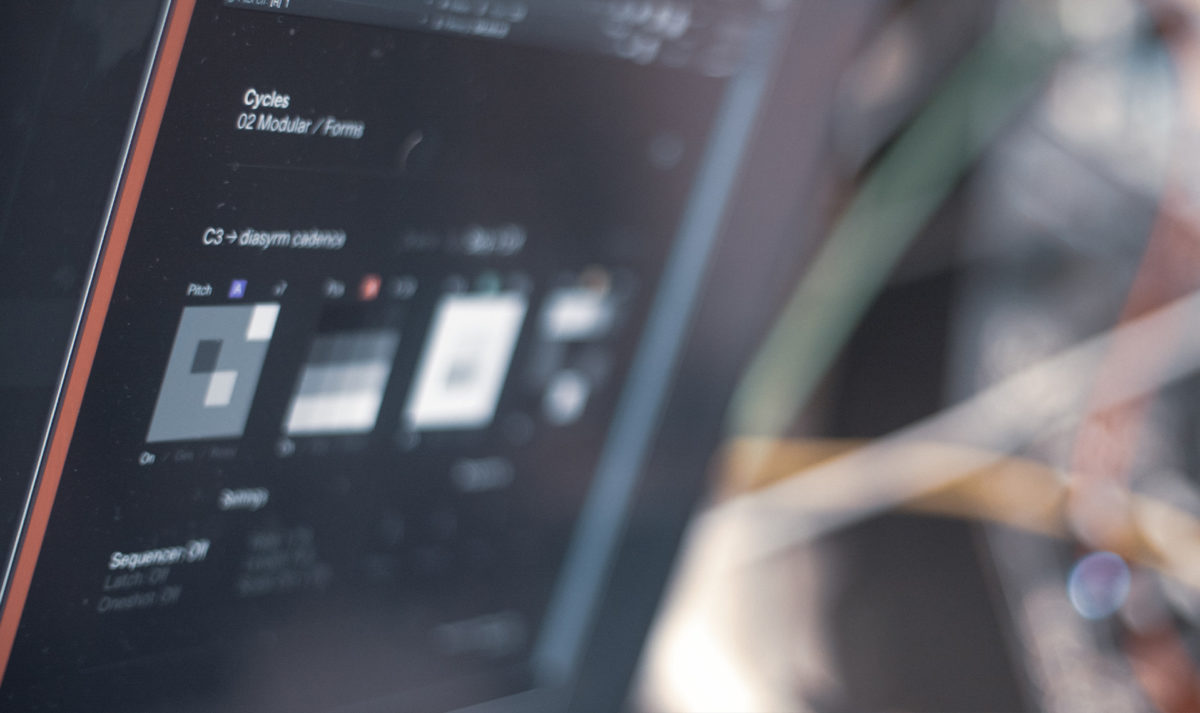
What’s next?
The team is currently readying a new series of expansion packs for CYCLES. Each one will be created in collaboration with a different musician or producer, with the first pack due out later this year. And if you’re already following Slate + Ash on Instagram, you might have seen them teasing something else of late. That something is staying mostly under wraps for now, but we can reveal that it’s part synth, part sampler, and fully adheres to two of S+A’s core principles – it’s all about adding movement, and it’s snowballed into something far bigger than it was ever intended to be. Watch this space.
Save on AURAS and CYCLES
Until August 24, you can grab AURAS and CYCLES together for a special introductory price at the NI online shop. Both are now fully NKS compatible and install via Native Access.










